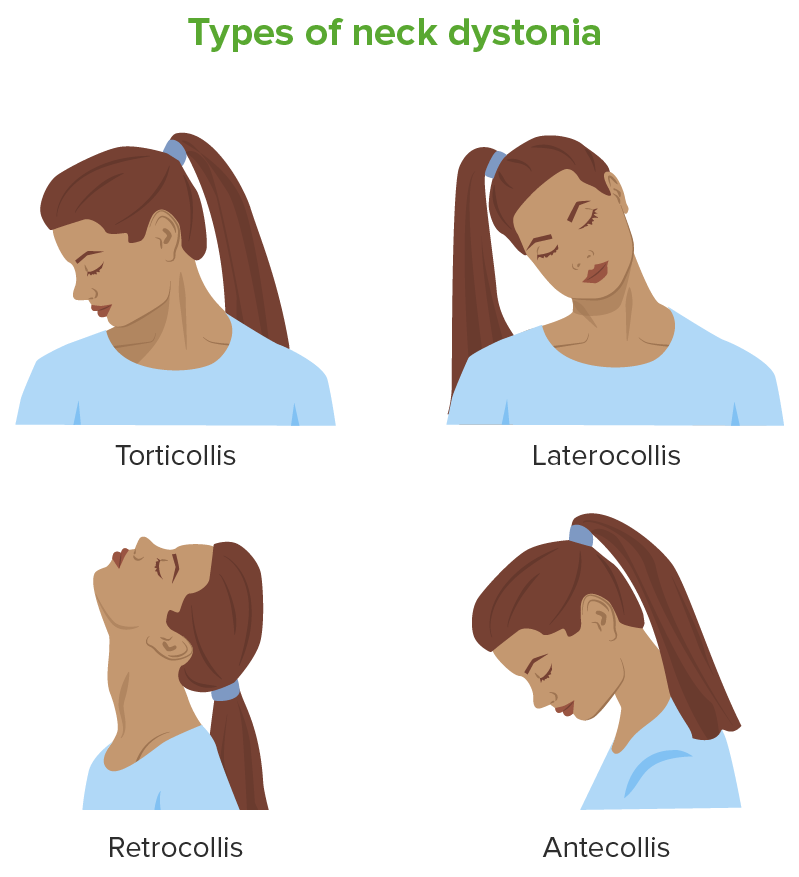Playlist
Show Playlist
Hide Playlist
Myotonic Dystrophy and Ion Channel Myopathy
-
IRheumatology II 01 Muscle Pathology.pdf
-
Reference List Pathology.pdf
-
Download Lecture Overview
00:02 We will take a look at Myotonic Dystrophy. 00:04 I’d like to separate Myotonic Dystrophy from your DMD and BMD for the fact that it’s a completely different type of pathogenesis. 00:12 Biochemically, we’re talking about trinucleotide expansion disease. 00:16 Some of the common ones that you should know include CAG mutations and that then of course gives you Huntington disease, GAA trinucleotide gives you Friedreich's ataxia, CGG should be thinking Fragile X. 00:31 So here we have myotonic dystrophy. 00:34 This is CTG trinucleotide issues. 00:39 Now, what’s going on with CTG? With the fact that you have a mutation taking place in which myotonin-1 is not present, and if you don’t have myotonin, what is or what are the clinical manifestations you can expect in your patient? One other thing that I wish to bring to your attention is that there is something called myotonin protein kinase known as DMPK mutation. 01:09 So some recent developments that you want to make sure that you keep in mind, not to worry, these are things that we will go through as we walk through myotonic dystrophy. 01:17 The first thing is weakness with sustained involuntary contraction and refers to the myotonia. 01:25 Its atrophy of type I muscle fibers. 01:28 What are these again, please? Are these the endurance or these the fast-twitch? And hence, I went through the review rather quickly with you. 01:37 I read slowly type I read increased hemoglobin because it’s a slow-enduring muscle. 01:44 Is that clear? Type II is the fast, keep that out of the picture right now and may be elicited by percussion. 01:53 Now you take a look at the picture here, percussion of your thenar eminence; therefore, then giving you sustained grip. 02:01 That’s your myotonia that you’re referring to. 02:06 Genetics. 02:08 How does auto-dominant mutation, would be specifically your chromosome 19 and I need you to focus on myotonin protein kinase called or abbreviated as DMPK Dystrophy Myotonin Protein Kinase. 02:27 Know that please, commit that to memory. 02:30 It’s a trinucleotide issue. 02:32 So therefore what does that mean to you? At any time that you have a trinucleotide pathology, you are thinking about the term anticipation, aren’t you? The pattern of anticipation meaning that with every subsequent generation and progeny, the onset of the disease gets a little bit earlier and earlier and earlier. 02:53 Here we have CTG greater than 30, you start worrying about your patient having myotonic. 03:01 Signs and symptoms. 03:03 Late childhood. 03:05 Gait abnormalities. 03:07 For example, weakness of the foot with dorsiflexion; the grip myotonia that I just showed you, the thenar type I muscle fibers; cataracts—take the C in CTG—cataract; take the T in CTG and the patient may have to wear a toupee because your patient is balding; and there might be issues with the genitals—G; CTG—if that helps you; testicular atrophy, cardiomyopathy, and Hatchet facies—I’ll show you a picture coming up. 03:51 In other words, what happens with Hatchet facies? It represents the fact that the temporal regions will then be exposed in myotonic dystrophy. 03:59 Make sure you know the signs and symptoms well to make your life a little bit easier. 04:03 C—cataracts, T—toupee, balding, and then G—genital issues with testicular atrophy. 04:10 Do not forget about the thenar eminence percussion causing grip and such. 04:16 Topic is lon Channel Myopathy. 04:19 What does this mean? Remember, you must have natural potential at the neuromuscular junction. 04:26 So that you could have presynaptically release your acetylcholine binding to acetylcholine receptors which technically is a ligand-gated sodium channel and that sodium channel brings in or influxes sodium bringing about then depolarization may then result in end plate potential. 04:43 You may then reach your threshold and you have an action potential. 04:45 My point is, what if some of these ions are diseased? Well, if you can’t even properly bring in sodium, for example, how in the world are you supposed to elicit an action potential? If you can’t have an action potential, you can’t even have a twitch. 05:02 Here we are. 05:03 Ion channel myopathies. 05:06 Inherited autosomal dominant and we’re learning more and more and more about these ion channels. 05:11 They’re have been a couple of baseball players, that for whatever reason, they were complaining of fatigue and tiredness, and the management thought that the athletes were lazy. 05:21 Then upon further examination came to find out that it was an ion channel myopathy taking place. 05:26 Relapsing episodes of hypotonic paralysis and episodes are usually induced by vigorous exercise. 05:32 So imagine you are the baseball player and you are trying to move from home, you know, to first base after a bat, and so obviously quite a bit of exercise in that instance, and if all of a sudden the ion channels do not wish to participate, and let’s say, contribute to your running, then for the most part, you are in a state of hypertonia. 05:58 Etiology. 05:59 Well defective sodium channels one possible cause. 06:02 Remember you do have other ion channels, but the one that you want to know for sure is one in which the sodium channels are not working. 06:09 The patient may present with hyperkalemia, now not only usually when you have a sodium channel issue, you should also be worried that the potassium channels may be playing a role. 06:20 As far as potassium is concerned, you know that it maintains resting membrane potential, so therefore, if there’s an ion channel myopathy, and it results in either hypo or hyperkalemia, you completely skew your resting membrane potential. 06:35 So for example, remind me again, say that you have hyperkalemia, and what would that do to your resting membrane potential? Now it would cause resting membrane potential to depolarize, getting closer to threshold. 06:47 But in the process, - is the depolarizing, it also effects the sodium channel, doesn’t it? So now what happens is quickly here, I’m just going to walk you through some physio, if you weak here, highly recommend that you take a look the sodium channel in great detail and physiology, where we have the M gate and the H gate if you remember. 07:09 So during depolarization, what then happens with the H gate or activation gate will close. 07:14 If the sodium channel is once and for all closed, you will never have influx and therefore you have muscle fatigue, won’t you? Now keep in mind that some of your ions or ion channels during action potential all need to be working in synchrony so that you can get proper muscle contraction. 07:34 Ion channel myopathy. 07:38 Here we have thyrotoxic myopathy. 07:41 Take a look at the patient here. 07:43 Oh my goodness, I’m about to take my boards. 07:46 No, no, no. 07:48 That is not what this patient is doing. 07:50 What’s happening to this patient is exophthalmos secondary to Graves’. 07:57 So we have thyrotoxic myopathy. 08:00 So begin with proximal weakness precede onset with signs and symptoms of thyroid dysfunction. 08:05 So if it is Graves’ then you’re looking at a patient who has heat intolerance, eating food but is not gaining weight, anxiety, tremors, palpitations, and so forth, pretibial mixed edema, exophthalmos. 08:20 This is exactly what we’re seeing and therefore causing exorbital hypertrophy causing orbital movement out, but in addition, the muscles might be severely affected - and so on and so forth. 08:32 Thyrotoxic myopathy. 08:35 Thyrotoxic period paralysis—weakness with hypokalemia, some myofiber necrosis is what you’re looking for and interstitial lymphocyte infiltration. 08:46 Interstitial lymphocyte infiltration is what you’re referring to. 08:50 Thyrotoxic period paralysis weakness with hypokalemia. 08:54 Keep that in mind, please. 08:55 Important. 08:59 Ethanol myopathy. 09:01 With ethanol, what it may do? For mechanisms that are beyond pathology is rhabdomyolysis with muscle pain, and myoglobinuria and eventually may leading to renal failure as well. 09:14 Ethanol myopathy.
About the Lecture
The lecture Myotonic Dystrophy and Ion Channel Myopathy by Carlo Raj, MD is from the course Muscle and Soft Tissue: Pathology. It contains the following chapters:
- Myotonic Dystrophy
- Introduction to Myotonic Dystrophy
- Ion Channel Myopathy
- Myasthenia Gravis
- Lambert-Eaton Myasthenic Syndrome
Included Quiz Questions
Myotonic dystrophy type 1 is most commonly associated with the expansion of which of the following trinucleotide repeats?
- Cytosine-thymine-guanine (CTG)
- Cytosine-guanine-guanine (CGG)
- Guanine-adenine-adenine (GAA)
- Cytosine-cytosine-guanine (CCG)
- Cytosine-adenine-guanine (CAG)
Myotonic dystrophy is caused by what type of genetic inheritance?
- Autosomal dominant
- Autosomal recessive
- X-linked recessive
- Sex-linked inheritance
- X-linked dominant
What type of muscle disorder is characterized by relapsing episodes of hypotonic paralysis induced by vigorous exercise, cold weather, or a high-carbohydrate meal?
- Ion channel myopathy
- Myasthenia gravis
- Duchenne muscular dystrophy
- Becker muscular dystrophy
- Myotonic dystrophy type 2
A 35-year-old woman presents with muscle weakness, fatigue, weight loss, and palpitations. Physical examination shows tachycardia and tremors in the outstretched hands. Which of the following conditions is the most likely diagnosis?
- Thyrotoxic myopathy
- Myotonic dystrophy
- Ion channel myopathy
- Duchenne muscular dystrophy
- Becker muscular dystrophy
A 20-year-old man presents with weakness of the foot dorsiflexors, grip myotonia, cataracts, and testicular atrophy. What is the most likely diagnosis?
- Myotonic dystrophy
- Thyrotoxic myopathy
- Ion channel myopathy
- Duchenne muscular dystrophy
- Becker muscular dystrophy
Customer reviews
5,0 of 5 stars
| 5 Stars |
|
5 |
| 4 Stars |
|
0 |
| 3 Stars |
|
0 |
| 2 Stars |
|
0 |
| 1 Star |
|
0 |





